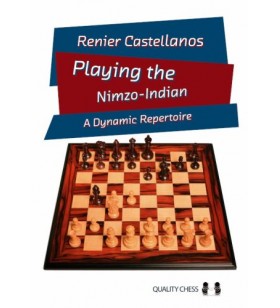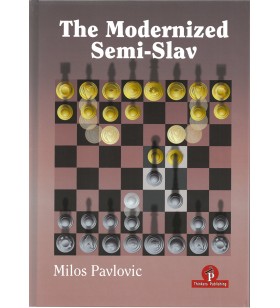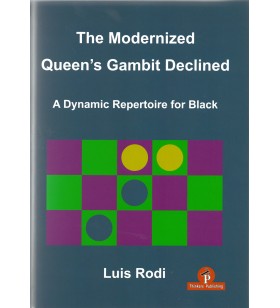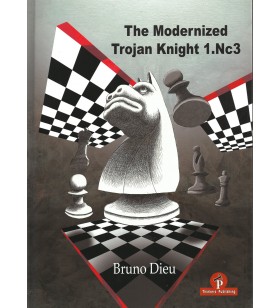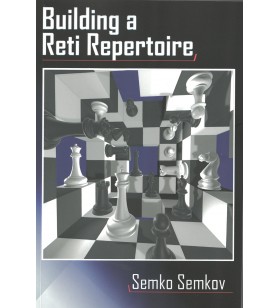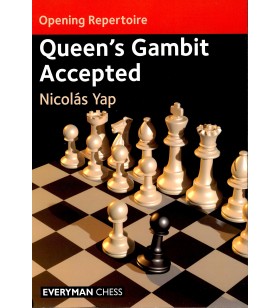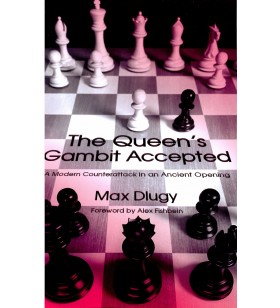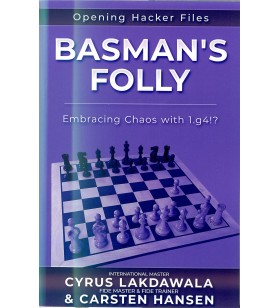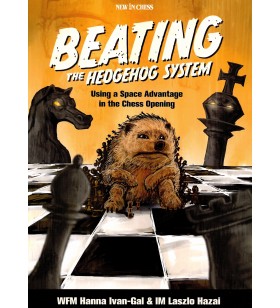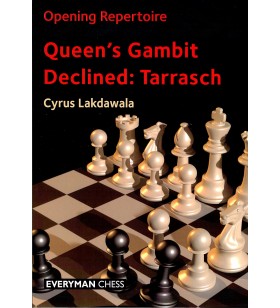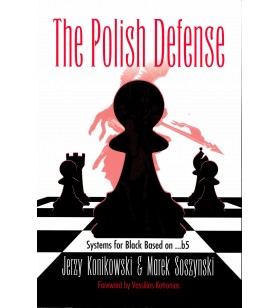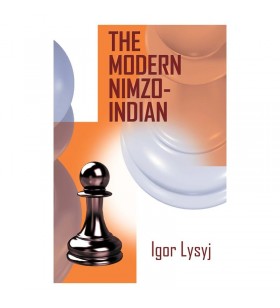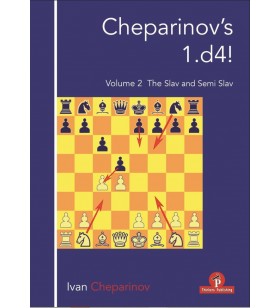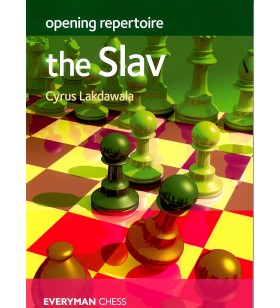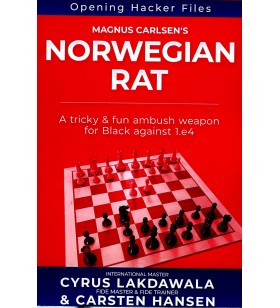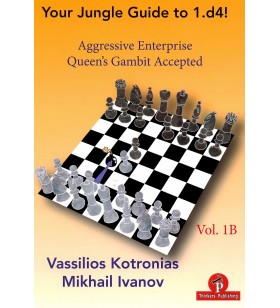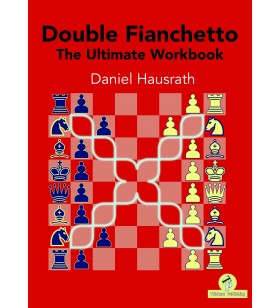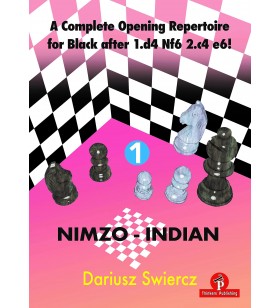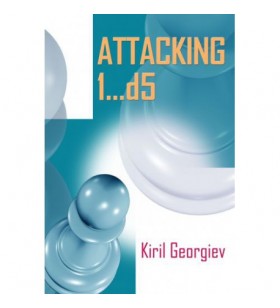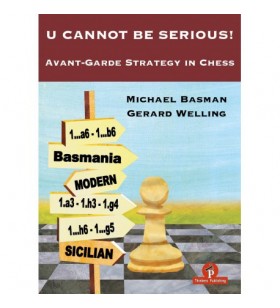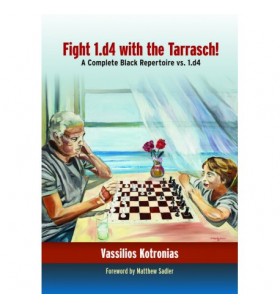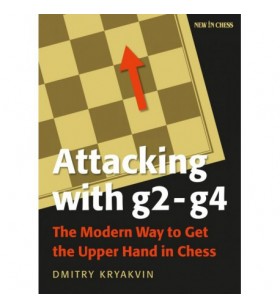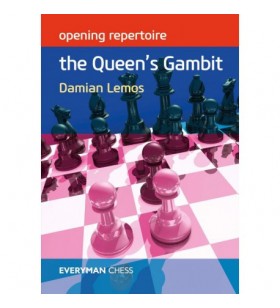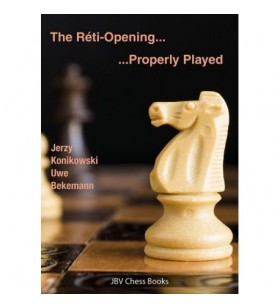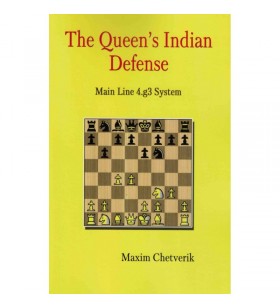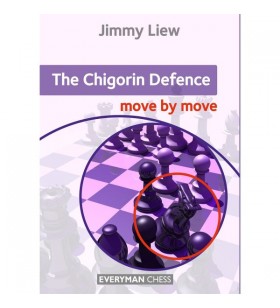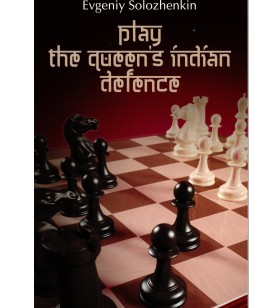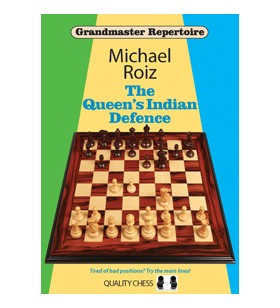
Actieve filters
Pavlovic - The modernized Semi-Slav (Hardcover)
The Semi-Slav Defense transcends its classification as a mere defensive response to 1.d4. It embodies a dynamic and multifaceted system that offers Black not only solidity in defense but also active counterplay and strategic flexibility. Here’s why the Semi-Slav is more than just a defense:
Rather than passively defending, the Semi-Slav allows Black to counterattack in the center and on the flanks. Moves like …e6-e5 and …c6-c5 often lead to sharp, tactical positions where Black can seize the initiative.
By delaying the development of the knight to f6, Black achieves a solid pawn structure with pawns on d5, e6, and c6. This structure provides a firm foundation for Black’s pieces and restricts White’s options for pawn breaks.
The Semi-Slav leads to strategically rich positions with multiple pawn breaks and piece maneuvers. Both sides must navigate intricate plans, making it a fertile ground for creative play and deep strategic understanding. Within the Semi-Slav, there are numerous variations and sub-variations, each with its own unique characteristics and strategic ideas. Players can tailor their repertoire to suit their style and preferences, whether they prefer solid, positional play or aggressive, tactical battles.
The Semi-Slav has been embraced by many top-level players, including World Champions like Vladimir Kramnik and Viswanathan Anand. Their success with the opening at the highest levels of competition demonstrates its effectiveness and versatility.
In essence, the Semi-Slav Defense transcends its classification as a defensive system by offering Black a rich tapestry of strategic possibilities and dynamic play. It is a complete repertoire choice that can suit a wide range of playing styles and preferences. 173 p.
Rodi - The modernized Queen's Gambit declined ( a Dynamic Repertoire for Black)
UITVERKOCHT
The history of the Queen’s Gambit is connected with the very beginnings of modern chess, the opening being cited in the earliest published books on the science of the game, such as the Göttingen manuscript (1490) and the books of Ruy Lopez (1561) and Salvio (1604). The so-called Queen’s Gambit Declined – or Refused – is, together with the Slav, the main defense in the universe of queenside openings, and shares with the aforementioned defense a well-earned reputation for being a reliable and very solid scheme.
The main aim of the present work is to show that Black can indeed obtain positions where all three results are possible. The Queen’s Gambit Declined, about a century after its golden age, is still a reliable and lively defense, where despite all the theory developed during its long existence it still holds secrets for analysts and offers new positions to enjoy a lively game, both strategically and tactically. 620 pages Hardcover
Dieu - The modernized Trojan Knight 1.Nc3
The author Bruno Dieu is a FIDE Master and became French Correspondence Chess Champion in 2000. He has a rich experience in chess, having participated in various chess tournaments, both over the board and in correspondence.
It's fascinating that he has competed with notable experts and writers on the 1 Nc3, such as Dick Van Geet, Anker Aasum, and Harald Keilhack. The mention of a book being a token of his experience suggests that he has documented his insights and knowledge about this opening.
Overall, this is a most promising exploration for those interested in chess and this specific opening.
We are convinced you will enjoy the chess ride Bruno provided in his excellent researched book. 470 pages Hardcover
Semkov - Building a Reti Repertoire
The English Opening is very popular nowadays, but 1.c4 e5! is a serious challenge and not to everyone's taste. Here comes 1.Nf3, with the idea to transfer the game into the English with c2-c4 to follow. The only hurdle on that path is 1...d5. Then White is at a crossroads. 2.c4 allows 2...d4 3.b4, while 2.e3 is an attempt to deny ...d4. Black can revive the threat with 2...c5, and again, White has a choice. 3.c4 d4 4.b4! leads to the Blumenfeld with reversed colours. Or he can continue to fight against ...d4 with 3.b3. White's decisions on the second and third move depends on the way he wants to meet the Queen's Gambit and the Slav/Meran/Chebanenko. Semkov covers in detail the different options, and also devotes several chapters on 1.Nf3 d5 2.e3 Nf6 3.c4 c6 and 3...e6 4.b3! (avoiding the innocuous version of the QGA after 4.Nc3 dxc4). There is another chapter on 1.Nf3 d5 2.e3 Nf6 3.c4 dxc4, where the absence of Nc3 allows White to get some pressure by refraining from d2-d4. 244 pages
Yap - Queen's Gambit Accepted
OUT OF STOCK
The Queen’s Gambit Accepted (1 d4 d5 2 c4 dxc4) has a long history and has always been popular at all levels of play. However, in the past few years it has undergone an explosion of interest, thanks to many new discoveries of possibilities for very dynamic play from Black. One of these is the line 1 d4 d5 2 c4 dxc4 3 e4 b5!?. This was previously thought to be a very poor line for Black but numerous recent games and investigations have completely changed this assessment. This is now almost the main line of the Queen’s Gambit Accepted and there is currently very little theoretical material on it.
Nicolas Yap analyses this line in forensic detail and also investigates other popular, counterattacking lines such as 3 e3 e5!?. The book is rounded off with suggestions to meet other White systems that involve 1 d4 but not 2 c4 (such as the London, Colle etc.) This makes the book a complete repertoire to face 1 d4.
- A complete repertoire for Black to counter 1 d4.
- The question and answer approach provides an excellent study method. 448 pages
Dlugy - The Queen's Gambit Accepted ( A Modern Couterattack in an Ancient Opening)
OUT OF STOCK
Forging New Paths in an Ancient Opening
The Queen’s Gambit Accepted is one of the oldest known openings in chess. It was first mentioned in chess literature in the late 15th century. Over 500 years later, American Grandmaster Max Dlugy demonstrates in this groundbreaking work that the QGA is still a fighting, uncompromising opening that allows Black to play for a win from the very first move. 349 pages
Lakdawala / Hansen - Basman's folly. Embracing chaos with 1.g4
In this volume, experienced authors Lakdawala & Hansen take the Basmanic plunge and examine some of International Master Michael Basman's most remarkable victories with 1.g4 or 1...g5, along with some of his less successful tries, as well as some games by other occasional adherents, like Grandmaster Hikaru Nakamura.
This should not become a cornerstone of your repertoire, but you are guaranteed a bunch of fun and entertaining games. 320 pages

 Français
Français Nederlands
Nederlands English
English